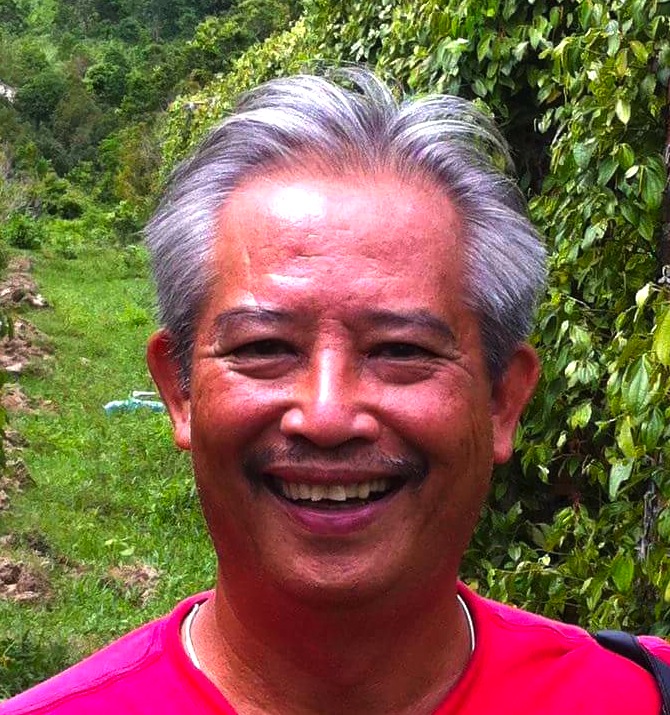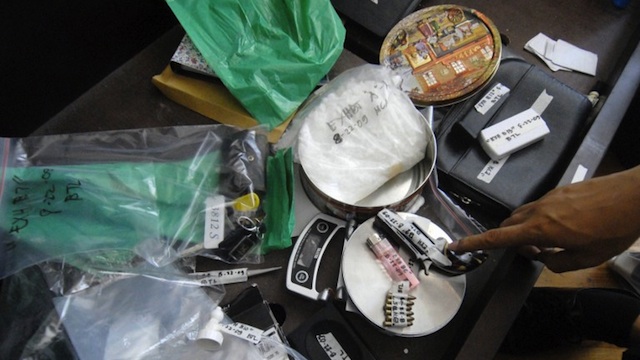 (READ: PART 1: Drugs 101: What you need to know about the PH drug situation)
(READ: PART 1: Drugs 101: What you need to know about the PH drug situation)
The Philippines, as a target market for drug trafficking, is in urgent need of a drug control policy that deals with this problem.
A large number of Filipinos are in jail abroad for drug trafficking offenses – the most prominent has been Mary Jane Veloso, though hundreds more are in jails in Malaysia, Indonesia, Singapore, Hong Kong, and even Cambodia.
The National Anti-Drug Plan of Action for 2015-2019 (NADPA) of the Dangerous Drugs Board (DDB) noted that:
- African drug syndicates are known to recruit Filipinos as drug mules
- Chinese or Filipino-Chinese drug syndicates control the drug trade in the country – smuggling, manufacture, and establishment of laboratories
- 66% of all arrested drug personalities involved in dismantled shabu (methampethamine) laboratories since 2002 are Chinese nationals
- the Mexican Sinaloa drug cartel has been reported to have operations since 2012
Since 2003, some 89 clandestine laboratories have been dismantled. Drug manufacturing through these laboratories has changed. Production is split into different stages, making detection more difficult. Labs have been set up in warehouses, inside subdivisions and condominiums.
Drug arrests and seizures are only the tip of the iceberg. The NADPA reported that 80,593 pushers and 66,154 users were arrested from 2002 to 2013. Over 10,500 kilos of shabu in powder form and 713,800 liters of its liquid form have been seized in the same period. It is estimated that globally, less than 10% of the total amount of illicit drugs being trafficked is eventually seized.
The Philippines, with its long coastline, many ports of entry, and with innovations in the manufacture, packaging, and transport of illicit drugs, is not any different. This is akin to smuggling, only that the proportion of smuggled and non-taxed items confiscated is not immediately quantified.
Laws and institutions
What are the laws and institutions responsible for responding to the problem of illegal drugs? Republic Act 9165, the Dangerous Drugs Act of 2002, provides that the government shall pursue an “intensive and unrelenting campaign against trafficking and use of dangerous drugs and other similar substances” and upholds the concept of the DDB as the primary policy-making body in drug prevention and control.
The Philippine Drug Enforcement Agency (PDEA) is the main implementing arm of the Board. The DDB is made up of 17 members– secretaries of various government departments, the Integrated Bar of the Philippines, and an NGO representative.

The NADPA 2015-2020 guides the implementation of the policies, plans and programs, and outlines the roles and responsibilities of all agencies and the partnerships with both regional and international organizations. Developed by the Dangerous Drugs Board, it visualizes a “Drug-Resistant, and eventually, Drug-Free Philippines.”
The NADPA has 5 core strategies: drug supply reduction, drug demand reduction, alternative development, civic awareness and regional and international cooperation.
Not much seems to have changed in the NADPA over the years.
In November 2002, the DDB launched a similar plan, with the goal of making the Philippines “drug free” by 2010 – then, as now, a futile goal. The 5 pillars in 2002 are exactly the same as the 5 strategies listed above.
While the current NADPA devotes 3 paragraphs to people who inject drugs (PWID) and notes with concern the rise of HIV infections among PWID in Cebu, it is silent about known effective strategies for reducing HIV and Hepatitis among PWID.
This approach, termed “harm reduction,” or “reducing drug-related harms” is a well known public health strategy, and comprises a set of activities that attempt to reduce the harm brought about by drug use, in the same way that, for example, seat belts and helmets are used to prevent needless deaths and injuries from traffic accidents. Harm reduction is controversial to drug control agencies, since it does not necessarily aim towards being “drug free.”
Failure in Cebu
What the NADPA fails to address is the rapid spread of HIV in people who inject drugs in Cebu City which is a relatively recent phenomenon. Drug injecting has been known for decades in Cebu, and for 24 years from 1984 until the end of 2008, 8 people were reported in the Department of Health’s national HIV registry as having acquired HIV through injecting drug use, all from Cebu.
But in a mere 6 years, by 2014, out of 1,366 HIV infections in Cebu, 74% (or 1,010) were in PWID. The number of HIV infections among PWID continues to rise; by March 2016, the DOH recorded 1,350 cases. Most, if not all, of these cases are in Cebu City and surrounding areas.
Apart from HIV, people who share needles are also prone to get Hepatitis. Both infections are entirely preventable by using clean needles and avoiding needle-sharing practices. These interventions are prohibited under the Dangerous Drugs Law, and the NADPA makes no mention these proven effective public health interventions.
Neither does the NADPA mention the pleasure principle – acknowledging the pleasures that drugs might bring, addressing the threats of emergent “party drugs.” The different sub-populations who might be more vulnerable to initiating drug use, such as out of school youth, those in poverty, youth who already smoke and drink, those working late shifts, or pockets of use in moderately and severely affected barangays are not sufficiently delineated.
Inadequate monitoring and evaluation strategy
There is also no strategy to reduce the harms caused by drug use – whether for example, advising partygoers about not mixing drugs, staying well hydrated, preventing overdose, or watching out for your friends, preventing date rape incidents, or using clean injecting equipment for prevention of Hepatitis and HIV in those who inject.
The NADPA is inadequate in terms of its monitoring and evaluation strategy. Its stated impact measure of “a 2% reduction in estimated dangerous drugs users annually, 10% increase of program activities implemented by member agencies” lacks clarity and is not specific about how these will be measured. It is hoped that these gaps will be addressed in its mid-term review in 2018.
Perhaps that review should be brought forward, as it has been overtaken by events, the increased demands for rehabilitation and the chilling, new emergent strategy to “end” drug use – the issue of extrajudicial killings of suspected users and pushers, which has led to vigilante justice, with no respect for law and due process, and the emergence of death squads. The effects of this strategy, pushed by the current president and the police authorities, need to stop.
This does not mean that drug trafficking, pushing, manufacturing, and crimes committed should not go unpunished – the country has sufficient laws and mechanisms for that, and only need more rigorous and timely implementation. A public health approach, rather than a law enforcement one, should form the basis for a response to drug use and dependence.
International NGOs working on drug policy, the UN secretary general and the executive director of the United Nations Office on Drugs and Crime (UNODC), issued a strongly worded statement against the killings on August 3, 2016. Part of the statement read:
"The UNODC remains greatly concerned by the reports of extrajudicial killing of suspected drug dealers and users in the Philippines. I join the United Nations Secretary-General in condemning the apparent endorsement of extrajudicial killing, which is illegal and a breach of fundamental rights and freedoms.
"Such responses contravene the provisions of the international drug control conventions, do not serve the cause of justice, and will not help to ensure that 'all people can live in health, dignity and peace, with security and prosperity,' as agreed by governments in the outcome document approved at the UN General Assembly special session on the world drug problem." – Rappler.com
Vicente S. Salas, MD, MPH, FPAFP, is an international consultant on HIV and AIDS, migration health and sexual and reproductive health who headed a team that wrote the first situation analysis of HIV and Injecting Drug use in the Philippines (2008), and authored a chapter, “HIV in Injecting Drug Users” in the book AIDS in the Philippines (2010). The recent spate of killings, a major focus of the new president, and the increasingly shrill discussions about drugs, drug addicts, drug lords and drug pushers prompted him to write this piece.